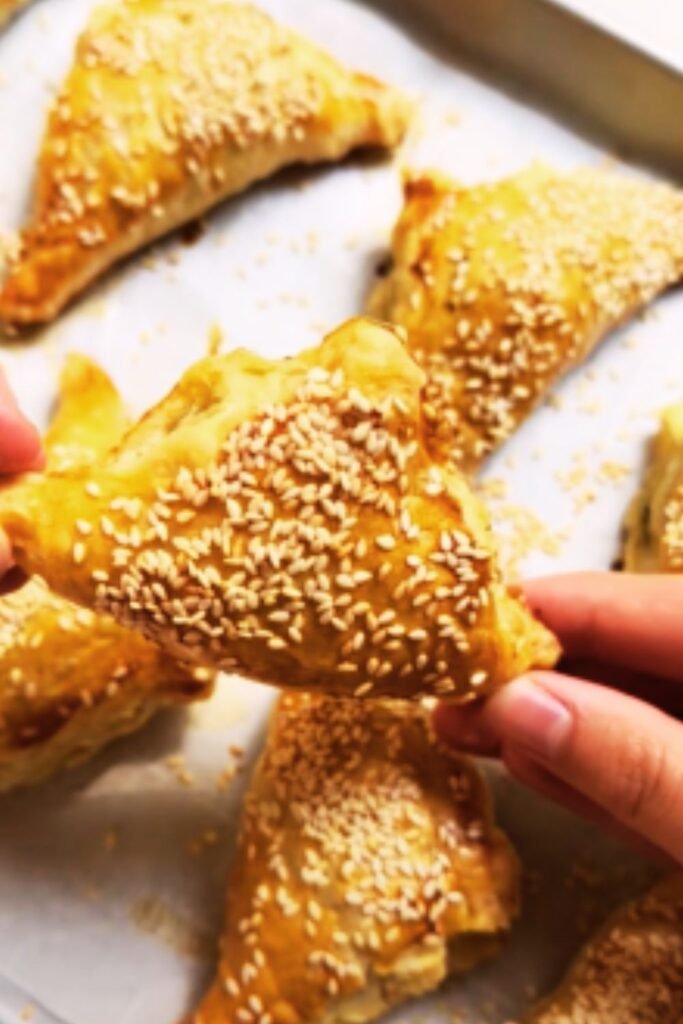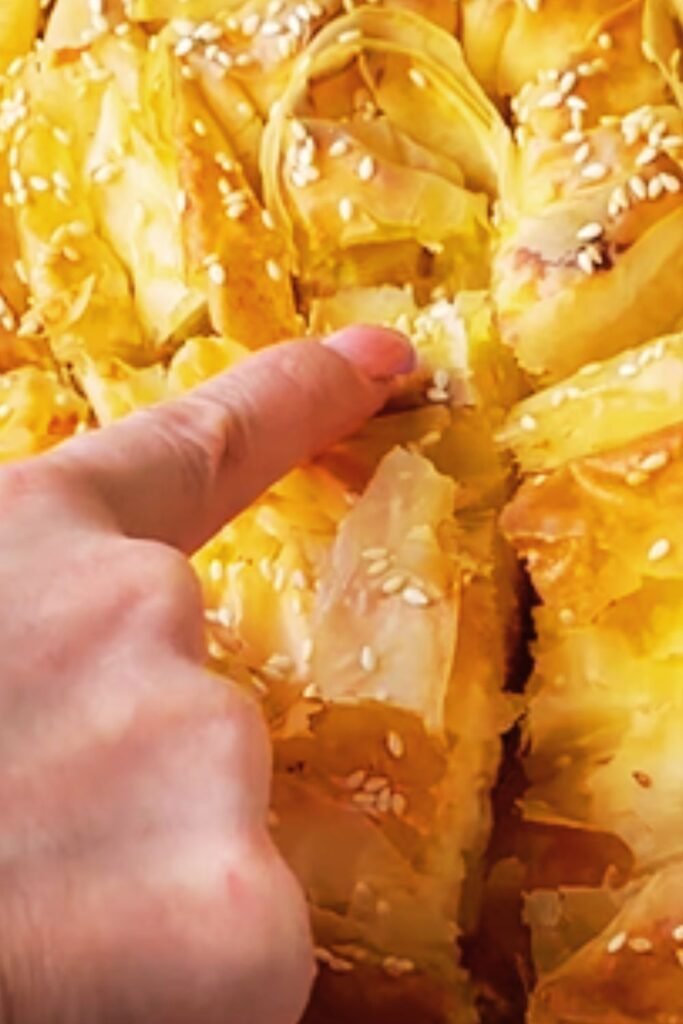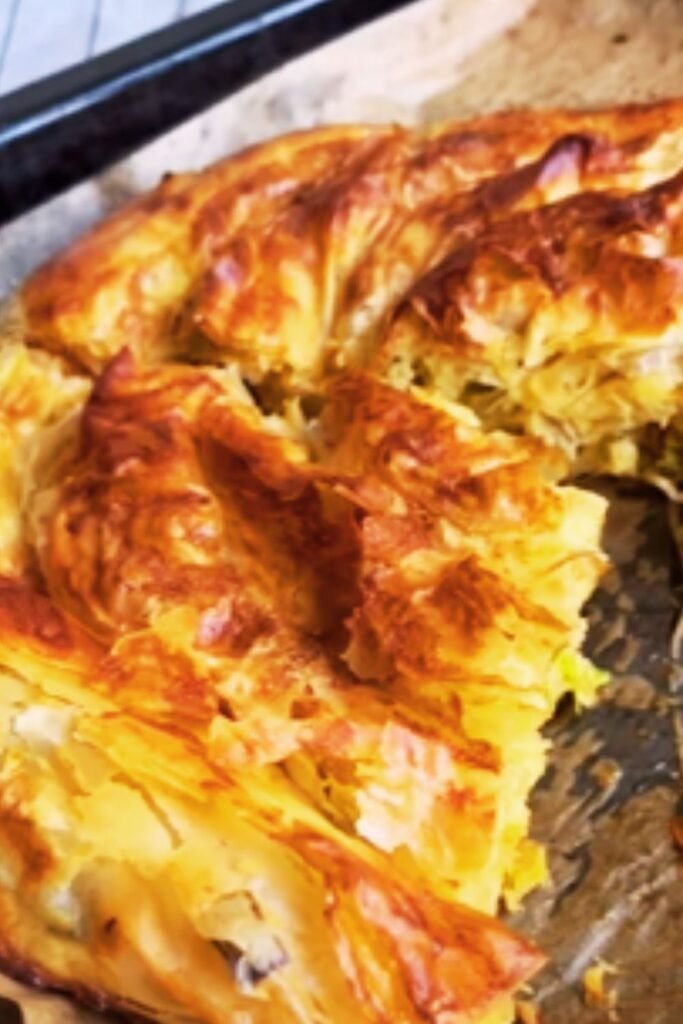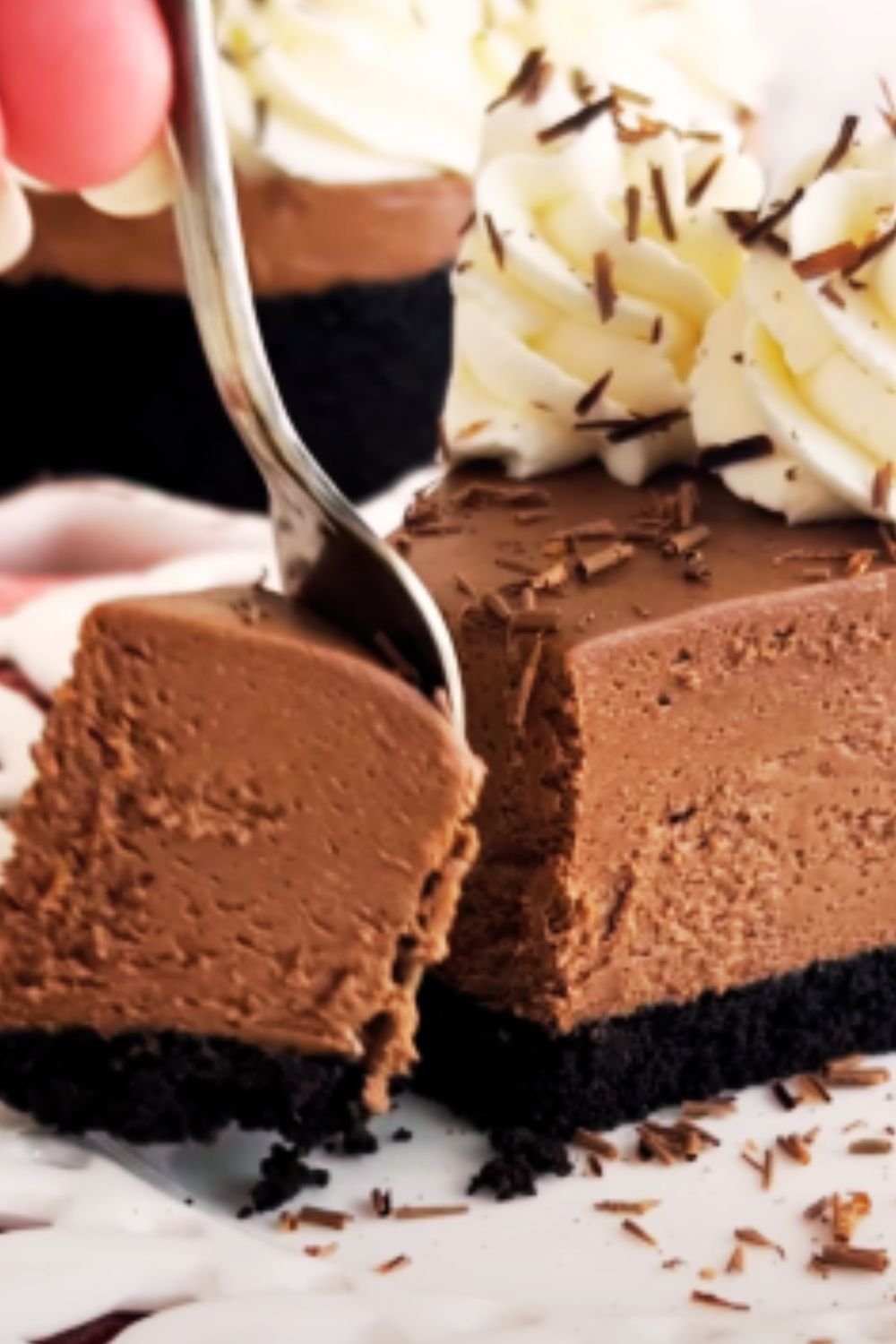When I first encountered banitsa, I was immediately captivated by its delicate, flaky layers and savory filling. This traditional Bulgarian pastry has become one of my absolute favorite dishes to both prepare and serve. There’s something truly magical about the way its paper-thin pastry sheets intertwine with the creamy cheese filling, creating an irresistible treat that’s enjoyed across Bulgaria and beyond.
What Is Banitsa?
Banitsa (баница) is a traditional Bulgarian pastry made from layers of thin dough sheets called “kori” that are filled with various mixtures, though most commonly with whisked eggs and white cheese. The pastry is then baked until it achieves a crispy, golden-brown exterior while maintaining a soft, flavorful interior.
I’ve discovered that banitsa isn’t just food in Bulgaria—it’s a cultural institution. It appears at virtually every significant life event, from holiday celebrations to family gatherings, functioning as both daily sustenance and ceremonial fare.
Historical Background
The origins of banitsa stretch back centuries in Bulgarian culture. While researching its history, I learned that variations of this layered pastry have been prepared since medieval times. The word “banitsa” itself is derived from the old Bulgarian word “баница” (banitsa), which relates to “gathering” or “collecting”—perhaps referring to the gathering of layers in the dish.
During Ottoman rule of Bulgaria (14th-19th centuries), the dish evolved further, incorporating influences from Turkish börek pastries. What fascinates me most is how banitsa has maintained its cultural importance through centuries of political and social change in the region.
Traditionally, banitsa held special significance during the winter holidays, especially New Year’s Eve. Bulgarians would place small paper fortunes called “kusmeti” inside the pastry. I find this tradition particularly charming—each family member would receive a piece containing a fortune that supposedly predicted their luck for the coming year.
Types of Banitsa
During my culinary explorations, I’ve encountered numerous variations of this versatile pastry. Here are the most popular types:
By Filling Type
| Type | Main Ingredients | Characteristics | Occasion |
|---|---|---|---|
| Traditional Banitsa (Сирена баница) | White cheese (sirene), eggs, butter | Savory, tangy flavor from the cheese | Everyday, special occasions |
| Sweet Banitsa (Сладка баница) | Sugar, milk, vanilla, cinnamon | Sweet flavor with warm spices | Dessert, holidays |
| Tikvenik (Тиквеник) | Pumpkin, sugar, walnuts, cinnamon | Sweet, autumn flavors | Fall, winter holidays |
| Zelnik (Зелник) | Leeks, spinach, or other greens | Hearty vegetable flavor | Lenten periods, spring |
| Mesnik (Месник) | Minced meat (usually pork) | Savory, substantial filling | Winter gatherings |
| Milk Banitsa (Млечна баница) | Milk custard, eggs, sugar | Creamy, dessert-like texture | Special occasions |
| Luchnik (Лучник) | Onions, eggs | Strong onion flavor | Winter, with hearty meals |
By Preparation Method
| Method | Technique | Texture | Difficulty Level |
|---|---|---|---|
| Rolled (Вита баница) | Sheets rolled with filling into a spiral | Densely layered, compact | Medium |
| Layered (Редена баница) | Flat sheets layered in a pan | Even layers, uniform texture | Easy |
| Crumpled (Дръпана баница) | Sheets crumpled with filling | Irregular, airy texture | Easy |
| Bag Method (Баница в торба) | Filling mixed directly with torn dough | Rustic, chunky texture | Easy |
| Individual Rolls (Банички) | Small individual pastries | Portable, crispier | Advanced |
Traditional Ingredients
The beauty of banitsa lies in its simplicity. The traditional version requires just a handful of ingredients, though achieving the perfect balance takes practice:
Core Ingredients:
- Filo Dough (Kori): Paper-thin sheets of unleavened dough
- Bulgarian White Cheese (Sirene): Similar to feta but typically made from sheep’s milk
- Eggs: Binds the filling and creates richness
- Butter or Oil: For richness and to crisp the layers
- Yogurt: Sometimes added to the filling for tanginess
- Salt: To taste
For Sweet Variations:
- Sugar: Granulated or powdered
- Seasonal Fruits: Particularly apples, pumpkin, or cherries
- Nuts: Walnuts, almonds, or pistachios
- Spices: Cinnamon, vanilla, or cloves
I’ve found that the quality of the cheese makes an enormous difference in the final product. Traditional Bulgarian sirene has a distinctly tangy, salty flavor that’s difficult to replicate exactly with other white cheeses, though Greek feta makes a reasonable substitute.
Step-by-Step Traditional Banitsa Recipe

After numerous attempts and refinements, I’ve developed this foolproof method for making authentic banitsa. This recipe serves 8-10 people.
Ingredients:
- 500g (1 lb) filo pastry sheets (kori)
- 400g (14 oz) Bulgarian white cheese (sirene) or feta
- 6 large eggs
- 200g (7 oz) plain yogurt
- 100ml (3.4 fl oz) sunflower oil or 100g (3.5 oz) melted butter
- 1/2 teaspoon baking soda (optional)
- 2 tablespoons sparkling water (optional, for a fluffier texture)
Equipment:
- Large mixing bowl
- Fork or whisk
- Round baking dish (preferably 30-35cm/12-14 inches in diameter)
- Pastry brush
- Knife or pizza cutter
Instructions:
- Prepare the filling: In a large bowl, crumble the cheese finely. Add the eggs and beat well. Mix in the yogurt, half of the oil/butter, and if using, the baking soda dissolved in the sparkling water. Stir until thoroughly combined.
- Prepare the baking dish: Preheat your oven to 180°C (350°F). Brush the baking dish generously with some of the remaining oil or butter.
- Assemble the banitsa:
- Lay out one sheet of filo on a clean work surface.
- Brush lightly with oil or melted butter.
- Sprinkle or spread a thin layer of the filling across the surface.
- Starting from one of the long sides, roll the sheet into a loose log.
- Place the roll into the baking dish, starting from the outer edge, forming a spiral.
- Repeat with the remaining sheets, continuing the spiral toward the center of the dish.
- Final touches: When all sheets are used, brush the top generously with the remaining oil or butter.
- Bake: Place in the preheated oven and bake for 40-45 minutes, until the top is golden brown and crispy.
- Rest: Allow the banitsa to rest for at least 15 minutes before cutting. This helps the layers set and makes it easier to serve.
Troubleshooting Common Issues:
| Problem | Possible Cause | Solution |
|---|---|---|
| Soggy bottom | Too much filling or inadequate heating from below | Use less filling or place baking dish on a preheated baking sheet |
| Dry or tough texture | Overcooked or insufficient butter/oil | Reduce baking time or increase fat content |
| Filling leaking | Holes in pastry or overfilling | Handle filo carefully and moderate filling amount |
| Uneven browning | Inconsistent oven temperature | Rotate dish during baking or check oven calibration |
| Pastry not flaky | Insufficient fat between layers | Ensure adequate brushing of each layer |
Regional Variations Across Bulgaria
One aspect I find fascinating about banitsa is how it varies across Bulgaria’s different regions:
Northern Bulgaria:
The northern regions, particularly around Veliko Tarnovo and Gabrovo, are known for a variation called “tutmanik,” which incorporates more yogurt and sometimes uses a leavened dough instead of filo sheets. The filling often includes more herbs like dill and parsley.
Southern Bulgaria:
In the Rhodope Mountains region, banitsa often includes potatoes and sometimes leeks alongside the cheese. The pastry is typically thicker and more substantial to suit the colder mountain climate.
Coastal Regions:
Along the Black Sea coast, I’ve noticed that banitsa sometimes incorporates fish or seafood elements. The use of olive oil is also more prevalent in these coastal recipes compared to the inland versions.
Western Bulgaria:
Near the Serbian border, banitsa is sometimes prepared with a mixture of different cheeses and might include spinach more frequently. The shape often differs too, with rectangular shapes being more common than the spiral.
Thracian Region:
In the central southern plains, sweet variations with pumpkin (tikvenik) are particularly popular, especially during autumn when fresh pumpkins are abundant.
Rituals and Traditions

Banitsa holds special significance in Bulgarian customs and traditions. I find these cultural aspects just as fascinating as the culinary ones:
New Year’s Eve:
The most significant banitsa tradition occurs on New Year’s Eve when a special version called “banitsa s kusmeti” is prepared. Small charms or written fortunes wrapped in foil are tucked inside the pastry. Each person receives a piece, and the charm inside predicts their fortune for the coming year. Traditional charms include:
- Coin: prosperity
- Button: new clothes
- Bean: abundance
- Wooden stick: health and strength
- Wedding ring: marriage
- Dogwood branch: longevity
Christmas Eve:
During the traditional Bulgarian Christmas Eve feast (Бъдни вечер/Badni Vecher), a meatless banitsa is served as part of the ritual meal that typically includes an odd number of dishes (usually 7, 9, or 11).
Name Days:
Banitsa is a common offering during name day celebrations, which are often more significant than birthdays in Bulgarian culture.
Harvests and Festivals:
During harvest festivals, especially in rural areas, special banitsa varieties might incorporate the freshly harvested crops.
Daily Rituals:
In many Bulgarian households, banitsa is prepared for breakfast, especially on weekends when family members gather together. I’ve found that this morning banitsa tradition creates a wonderful atmosphere of togetherness.
Nutritional Information
As a culinary enthusiast who also values nutritional awareness, I’ve analyzed the typical nutritional profile of traditional cheese banitsa. It’s worth noting that values can vary significantly based on preparation methods and specific ingredients used:
Nutritional Facts (Per 100g Serving):
| Nutrient | Amount | % Daily Value* |
|---|---|---|
| Calories | 250-300 kcal | 12-15% |
| Protein | 8-10g | 16-20% |
| Carbohydrates | 25-30g | 8-10% |
| Fat | 14-18g | 18-23% |
| Saturated Fat | 7-9g | 35-45% |
| Cholesterol | 100-120mg | 33-40% |
| Sodium | 400-500mg | 17-22% |
| Calcium | 150-200mg | 15-20% |
| Iron | 1-2mg | 5-11% |
| Fiber | 1-2g | 4-8% |
*Based on a 2,000 calorie diet
Health Considerations:
While banitsa is delicious, I always remind myself that it’s relatively high in calories, fat, and sodium due to the cheese and buttered filo layers. For those monitoring their intake, here are some healthier adaptations I’ve experimented with:
- Using reduced-fat white cheese or mixing with cottage cheese
- Incorporating more vegetables like spinach or leeks to increase fiber content
- Using olive oil instead of butter
- Adding herbs like parsley, dill, or mint to boost flavor without additional salt
- Opting for whole grain filo when available
Serving Suggestions
I’ve found that banitsa is incredibly versatile when it comes to serving. Here are my favorite ways to enjoy it:
For Breakfast:
- With a cup of Bulgarian yogurt (kiselo mlyako)
- Alongside fresh seasonal fruits
- With a strong cup of Turkish coffee
- With a glass of ayran (traditional yogurt drink)
For Lunch or Dinner:
- With a simple green salad dressed with olive oil and lemon
- Alongside tarator (cold yogurt and cucumber soup) in summer
- With roasted vegetables as a side dish
- As part of a mezze spread with other small dishes
For Celebrations:
- Cut into smaller pieces as part of a buffet spread
- Paired with a fruit compote (kompot) for dessert versions
- With sparkling water with lemon for a refreshing contrast
- As part of a traditional Bulgarian feast with shopska salad, kyufte (meatballs), and kavarma (meat stew)

Modern Adaptations
While I treasure traditional banitsa recipes, I’ve also enjoyed experimenting with contemporary twists on this classic pastry:
Fusion Ingredients:
- Mediterranean Banitsa: Incorporating sun-dried tomatoes, olives, and fresh herbs like basil and oregano
- Middle Eastern Influence: Adding za’atar, sumac, or pomegranate molasses for complex flavors
- Sweet Fusion: Layering with mascarpone, honey, and pistachios for an Italian-Bulgarian crossover
Dietary Adaptations:
- Vegan Banitsa: Using tofu blended with nutritional yeast and cashews instead of cheese, and olive oil instead of butter
- Gluten-Free Version: Utilizing rice flour or commercially available gluten-free filo pastry
- Low-Carb Adaptation: Replacing traditional filo with thin omelets as the layers
Presentation Innovations:
- Individual Portions: Creating small, single-serving banitsa cups in muffin tins
- Open-Face Style: Layering the filling over a flat sheet of filo and folding the edges for a rustic galette-style presentation
- Decorative Techniques: Using herb sprigs or edible flowers pressed into the top layer for visual appeal
Time-Saving Methods:
- Make-Ahead Components: Preparing the filling a day in advance
- Freezing Techniques: Assembling the entire banitsa and freezing unbaked for later use
- Quick Assembly: Using a “rough crumple” technique rather than careful layering for casual meals
Tips for Perfect Banitsa
Through much trial and error, I’ve developed these tips for achieving banitsa excellence:
Working with Filo:
- Temperature matters: Always bring filo to room temperature before using
- Prevent drying: Keep unused sheets covered with a damp cloth while working
- Handle gently: Filo tears easily, but don’t panic if it does—tears can be disguised in layering
- Store properly: Wrap tightly in plastic if you have leftover sheets and use within 1-2 days
Cheese Selection:
- Authentic choice: True Bulgarian sirene is ideal but hard to find internationally
- Best alternatives: Greek feta (preferably sheep’s milk) is the closest substitute
- Blend strategy: Mix sharper and milder white cheeses for balanced flavor
- Crumble size: Neither too fine nor too chunky—aim for pea-sized crumbles
Baking Perfection:
- Pan selection: Traditional clay vessels produce the most authentic result, but metal baking pans work well too
- Even browning: For perfectly golden tops, brush with a mixture of egg yolk and milk
- Temperature control: Start at higher heat (200°C/390°F) for 10 minutes, then reduce to 180°C/350°F
- Doneness test: Listen for a subtle crackling sound when the banitsa is done
Storage and Reheating:
- Cooling time: Allow to cool for at least 15-20 minutes before cutting
- Room temperature storage: Can be kept covered at room temperature for up to 24 hours
- Refrigeration: Store in the refrigerator for up to 3 days
- Reheating method: For crispy texture, reheat in oven at 150°C/300°F for 10-15 minutes rather than using a microwave
Common Questions and Answers

Through my experience sharing banitsa with friends and on food blogs, I’ve encountered these common questions:
Q: Can I use phyllo pastry from the supermarket instead of traditional kori?
Yes, commercially available phyllo (filo) pastry works perfectly for banitsa. Look for the thinnest variety you can find. The main difference is that traditional Bulgarian kori might be slightly thicker, but modern phyllo produces excellent results.
Q: My filo sheets keep breaking. What am I doing wrong?
Filo pastry dries out quickly when exposed to air. Keep unused sheets covered with a damp kitchen towel while you work, and don’t worry about small tears—they’ll be hidden in the layering process and won’t affect the final result.
Q: Can I prepare banitsa in advance and bake it later?
Absolutely! You can assemble the entire banitsa, cover it tightly with plastic wrap, and refrigerate for up to 24 hours before baking. You can also freeze the assembled but unbaked banitsa for up to a month. When ready to bake, allow it to thaw in the refrigerator overnight before baking.
Q: Why did my banitsa turn out soggy?
Soggy banitsa usually results from too much liquid in the filling. Make sure to drain yogurt if it’s very watery, and don’t overdo the oil in the filling. Also, ensure your oven is properly preheated before baking.
Q: What can I substitute for Bulgarian white cheese?
The best substitute is Greek feta, preferably sheep’s milk feta. Other options include a mixture of feta and ricotta (for a milder flavor) or even goat cheese for a different but complementary flavor profile.
Q: Can I make a vegan version of banitsa?
Yes! Replace the cheese with a mixture of crumbled firm tofu seasoned with nutritional yeast, lemon juice, and a bit of white miso for umami. Use olive oil instead of butter and skip the eggs, adding a bit more oil to compensate for the missing moisture.
Q: How do I know when my banitsa is done baking?
A perfectly baked banitsa should be golden brown on top and slightly pulling away from the edges of the baking dish. If you insert a knife into the center, it should come out clean without any raw egg mixture. You might also hear a slight crackling sound from the crispy top.
Q: Can I make sweet banitsa with the same technique?
Absolutely! For sweet banitsa, the technique remains the same, but you’ll replace the cheese filling with ingredients like grated apples mixed with cinnamon and sugar, crushed walnuts with honey, or sweetened pumpkin puree.
Cultural Significance Beyond Bulgaria
While researching banitsa, I discovered its influence extends well beyond Bulgaria’s borders:
Regional Relatives:
- Greek Bougatsa: A close cousin that often contains either sweet custard or cheese
- Turkish Börek: Similar layered pastry with various fillings including cheese, spinach, or meat
- Romanian Plăcintă: A pastry with cheese, potatoes, or cabbage filling
- Serbian Gibanica: Virtually identical to banitsa with layered cheese and eggs
- North Macedonian Zelnik: Often filled with leeks or spinach
Global Impact:
Banitsa has traveled with Bulgarian diaspora communities worldwide, becoming a cultural ambassador of sorts. I’ve encountered variations in major cities across Europe, North America, and Australia, often served in Bulgarian cultural centers or specialty restaurants.
What I find particularly interesting is how banitsa has begun to influence modern global cuisine, with chefs incorporating its techniques and flavors into fusion dishes that blend Bulgarian tradition with local ingredients.
Conclusion
My journey with banitsa has been one of culinary discovery and cultural appreciation. From my first attempts at preparing this delightful pastry to exploring its rich history and significance, I’ve developed a profound respect for this seemingly simple dish.
What makes banitsa truly special is how it transcends its ingredients—it’s more than just dough and cheese. It represents centuries of tradition, community celebration, and the shared joy of breaking bread together. Whether enjoyed as a humble breakfast, a holiday centerpiece, or a culinary experiment, banitsa exemplifies the beautiful simplicity that makes Balkan cuisine so appealing.
I encourage you to try your hand at making banitsa. Don’t be intimidated by the delicate filo or the spiral arrangement—even imperfect attempts will yield delicious results. And as you enjoy your creation, remember that you’re participating in a tradition that has brought comfort and joy to countless people across generations.
The golden, flaky layers of banitsa aren’t just a treat for the taste buds—they’re a connection to a rich cultural heritage and a reminder that some of the most meaningful culinary traditions arise from simple, honest ingredients prepared with care and shared with love.
Frequently Asked Questions
Q: Is banitsa served hot or cold?
While freshly baked banitsa served warm is most traditional, it’s also commonly enjoyed at room temperature, especially for breakfast or as a snack. Some Bulgarians even enjoy leftover banitsa straight from the refrigerator.
Q: How difficult is it to make banitsa for beginners?
Despite its impressive appearance, banitsa is actually quite forgiving for beginners. The most challenging aspect is handling the delicate filo sheets, but even if they tear, the layered nature of the dish hides imperfections. Start with a simple cheese filling and a round baking dish, which makes the spiral pattern easier to form.
Q: How long does banitsa stay fresh?
Properly stored in the refrigerator, banitsa will keep for 3-4 days. For best texture, reheat it in a conventional oven rather than a microwave to restore some crispness to the layers.
Q: Can I freeze leftover banitsa?
Yes, banitsa freezes well. Wrap individual portions tightly in plastic wrap and then aluminum foil. Freeze for up to 2 months. Thaw in the refrigerator overnight and reheat in a 150°C (300°F) oven until heated through and crisp.
Q: What makes Bulgarian yogurt different for banitsa recipes?
Bulgarian yogurt (kiselo mlyako) is made with specific bacterial cultures (Lactobacillus bulgaricus and Streptococcus thermophilus) that give it a distinctive tangy flavor and thick consistency. If unavailable, Greek yogurt makes an excellent substitute in banitsa recipes.


